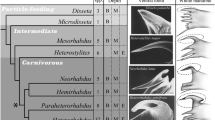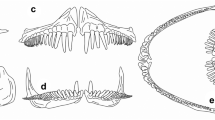Abstract
The morphology of the mouthparts of Callianassasubterranea (Montagu, 1808) was studied using light microscopy and scanning electron microscopy. All the mouthparts except the mandible, but including the mandibular palp, appeared to be supplied with a wide variety of setae. The setae of the medial rims of these appendages (the “ventral screens”) show a trend of decreasing passive motility towards the oral side; this applies to the setae themselves as well as the micro-structures on the setae. The motion of the mouthparts was filmed from aboral and rostral views with macro-video and endoscopy equipment, after marking the joints and tips of maxillipeds and the mandibles. Motion analysis showed that all mouthparts except the first maxilla (Mx1) actively moved during deposit feeding. The first and second maxillipeds (MP1, MP2), Mx2 and the mandibles moved at the same frequency, contra-lateral in phase, but with a 50% phase shift between ipsi-lateral mouthparts. The MP3 moved at a lower frequency with a contra-lateral phase shift of about 50% without an obvious phase relation with the other mouthparts. According to the following scenario, the feeding mechanism of C. subterranea seems to be based on the morphology and motion of the appendages in combination with specific setal functions. The MP3 make large excursions over the substrate, suspending the sediment in front of the MP2. The MP2 move through the upper layer of the suspension, trapping particles of 30 μm and smaller. These particles are combed out by the MP1 and transferred to the mouth opening by the cascade of finely structured setae of the inner mouthparts, and finally ingested.
Similar content being viewed by others
Author information
Authors and Affiliations
Additional information
Received: 26 September 1997 / Accepted: 27 March 1998
Rights and permissions
About this article
Cite this article
Stamhuis, E., Dauwe, B. & Videler, J. How to bite the dust: morphology, motion pattern and function of the feeding appendages of the deposit-feeding thalassinid shrimp Callianassa subterranea. Marine Biology 132, 43–58 (1998). https://doi.org/10.1007/s002270050370
Issue Date:
DOI: https://doi.org/10.1007/s002270050370




